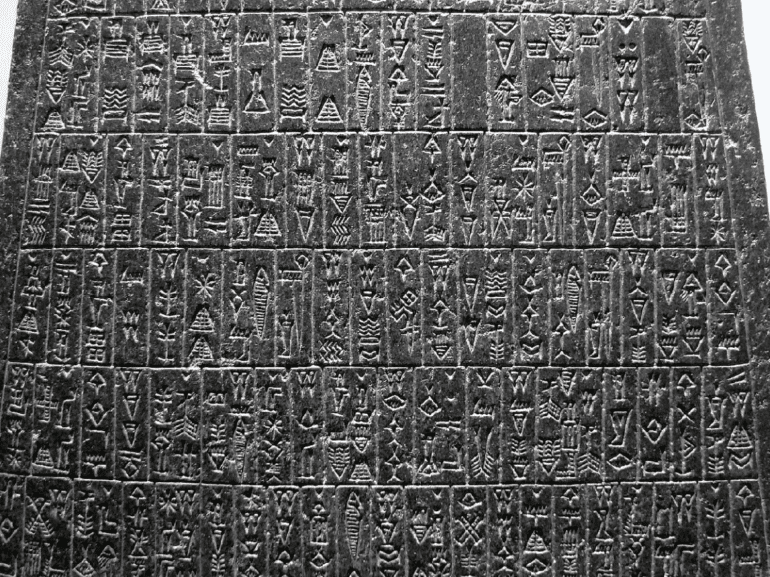TL;DR:
- Archaeologists and computer scientists have developed an AI program to translate ancient cuneiform tablets.
- The program utilizes neural machine learning translations and achieves high accuracy in decoding Akkadian texts.
- Akkadian is an ancient East Semitic language preserved on clay tablets dating back to 2500 BC.
- Most of these tablets remain untranslated and inaccessible due to their vast quantity and limited experts.
- The AI program demonstrates excellent accuracy in translating formal Akkadian texts but encounters challenges with more literary and poetic expressions.
- The goal is to create a collaboration between humans and machines to assist scholars and students in understanding the ancient language.
- The neural machine translation (NMT) model is available online and the researchers are developing an application called the Babylonian Engine.
Main AI News:
In a remarkable breakthrough, archaeologists and computer scientists have harnessed the power of artificial intelligence (AI) to decode ancient cuneiform tablets with unparalleled speed and accuracy. This groundbreaking achievement, utilizing state-of-the-art neural machine learning translations, has opened a new chapter in deciphering the mysteries of Akkadian texts.
Akkadian, an ancient East Semitic language once spoken across Mesopotamia, has long posed a formidable challenge to scholars due to its complex script and the limited number of experts proficient in its translation. However, a team of researchers has now pioneered an AI program capable of instantaneously translating these 5,000-year-old clay tablets, shedding light on the political, social, economic, and scientific history of ancient Mesopotamia.
Published in the prestigious journal PNAS Nexus by the Oxford University Press, the researchers present their groundbreaking AI program, which demonstrates a remarkable level of accuracy in translating Akkadian texts. These tablets, inscribed in cuneiform script and dating back to 2500 BC, provide invaluable insights into the civilizations that thrived in the regions of Akkad, Assyria, Isin, Larsa, Babylonia, and possibly Dilmun.
Until now, the sheer volume of these ancient clay tablets has posed a significant hurdle to their translation and accessibility. The scarcity of experts capable of deciphering cuneiform script has left a vast majority of these documents untouched. However, with the advent of AI, this formidable obstacle is being overcome.
While the AI program excels in accurately translating formal Akkadian texts like royal decrees and omens, it occasionally encounters challenges when confronted with more literary and poetic expressions, such as letters from priests or tracts. The researchers note that the AI sometimes produces “hallucinations,” generating results unrelated to the original text. Nevertheless, this breakthrough serves as a stepping stone toward a collaborative approach between humans and machines, empowering scholars and students in their pursuit of understanding this ancient language.
The neural machine translation (NMT) model, which translates Akkadian into English, is now readily accessible through an online notebook, and the source code has been made available on GitHub at Akkademia. Furthermore, the researchers are actively working on an innovative online application called the Babylonian Engine, which promises to enhance the translation experience and further democratize access to this rich cultural heritage.
With AI-powered translation tools at their disposal, researchers and language enthusiasts are poised to explore the depths of ancient Mesopotamia, uncovering the untold stories etched into clay tablets by civilizations long past. As the symbiotic relationship between humans and machines deepens, the translation of these enigmatic texts is no longer confined to a select few but becomes a shared journey of discovery, bridging the gap between past and present.
Conclusion:
The use of artificial intelligence to translate 5,000-year-old cuneiform tablets marks a significant advancement in the field of archaeology. This breakthrough technology enables researchers to overcome the barriers posed by the sheer volume of untranslated tablets and the scarcity of experts in deciphering ancient scripts. With the availability of the AI-powered translation program and the ongoing development of user-friendly applications, the market for ancient language studies and archaeological research is poised to expand. The democratization of access to these invaluable historical resources opens doors for scholars, students, and language enthusiasts, fostering a deeper understanding of ancient civilizations and their cultural heritage.

